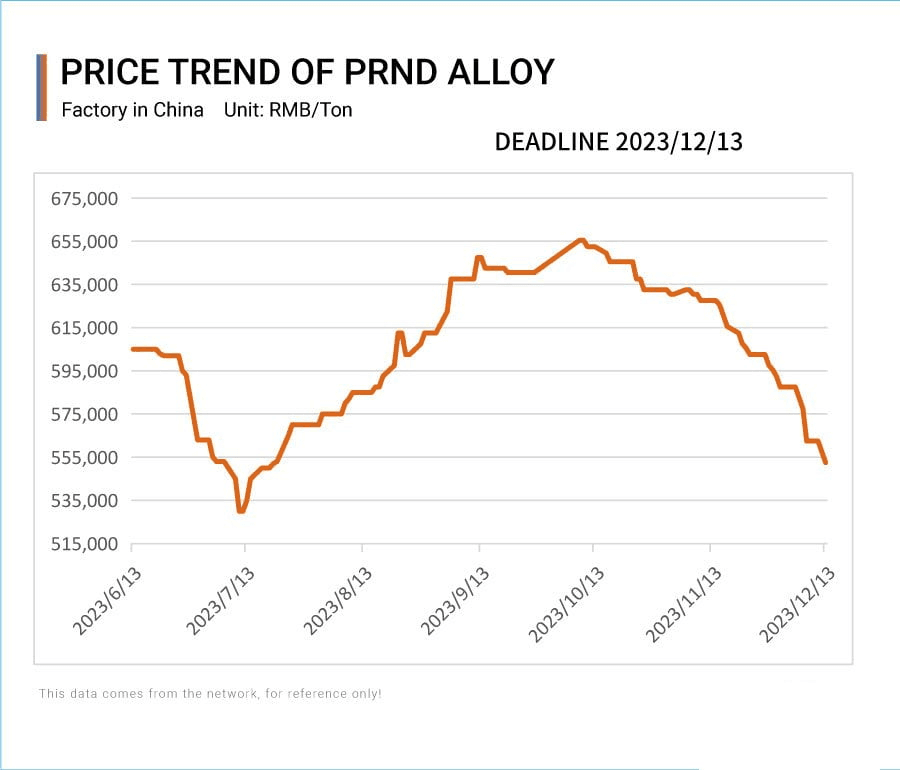Introduction:
In today’s fast-paced world of technology, neodymium rare earth magnets have become an essential part of our everyday lives. Without them, our electric cars wouldn’t be as efficient, wind farms wouldn’t be able to generate as much energy, and our smartphones would be much bulkier. But despite their importance, the price of neodymium magnets can be unpredictable, making it difficult for companies to plan and manage their supply chains. There are a lot of factors that contribute to these price fluctuations, and they can be quite complex.
Reasons for the Fluctuation of Neodymium Magnet Raw Material Prices:
The price of neodymium magnets can change significantly because of supply and demand. As technology advances and more people want to use clean energy, the demand for neodymium magnets goes up. But there are a lot of things that can limit how many magnets can be made. For example, it can be hard to get the materials needed to make the magnets and expensive to mine. Also, different countries have different rules about trading rare earth materials, and those rules can change how much magnets cost to buy and sell.

Supply and Demand Dynamics:
At the heart of the matter lies the delicate balance between supply and demand. Neodymium, a key ingredient in these magnets, witnesses a surge in demand driven by advancements in renewable energy, electric vehicles, and consumer electronics. However, the supply side struggles to keep pace with this escalating demand due to the complex extraction processes and limited reserves. Consequently, any disruption in supply, be it due to geopolitical tensions or production bottlenecks, can send shockwaves through the market, leading to sharp price fluctuations.
Example: In 2010, when China, the dominant supplier of rare earth elements, imposed export quotas, it caused a ripple effect across industries reliant on neodymium magnets. Prices soared, with some reports citing a quadrupling in just a few months, highlighting the vulnerability of the market to supply disruptions.
Production Costs and Technological Advancements:
The production of neodymium magnets entails intricate processes, including extraction, refining, and alloying, each susceptible to cost fluctuations. Factors such as energy prices, labor costs, and environmental regulations play pivotal roles in determining production costs. Additionally, advancements in extraction technologies and recycling processes can disrupt traditional cost structures, further contributing to price volatility.
Example: The advent of innovative recycling methods, such as magnet-to-magnet recycling, has the potential to alter the supply-demand equation significantly. As these technologies mature and gain adoption, they could mitigate supply constraints, thereby influencing raw material prices.
Policy and Regulatory Changes:
The regulatory landscape surrounding rare earth elements, particularly concerning environmental standards and trade policies, adds another layer of complexity to price dynamics. Changes in regulations, whether aimed at curbing environmental degradation or safeguarding national interests, can have profound implications for production costs and market access.
Example: Stringent environmental regulations in key production regions, such as China, can lead to increased compliance costs for producers, potentially translating into higher prices for end consumers.
Global Economic Conditions:
The broader macroeconomic environment, characterized by factors such as currency fluctuations, interest rates, and geopolitical tensions, casts a shadow over the rare earth market. Economic downturns, trade disputes, or geopolitical conflicts can dampen demand or disrupt supply chains, exerting downward or upward pressure on prices accordingly.
Example: During the global economic downturn of 2008-2009, demand for neodymium magnets plummeted across various industries, triggering a downward spiral in prices as manufacturers scaled back production and inventory levels.
Conclusion:
In conclusion, the volatility in the prices of raw materials for neodymium magnets stems from a confluence of factors, ranging from supply-demand dynamics to external influences such as policy changes and global economic conditions. As industries continue to innovate and evolve, navigating this volatile landscape requires a nuanced understanding of these factors and proactive risk management strategies. Only by unraveling the complexities underlying this volatility can stakeholders harness the full potential of neodymium magnets while mitigating the associated risks.


